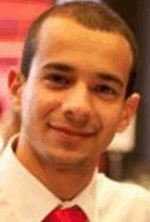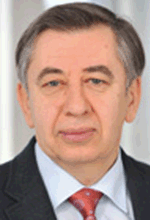Coreflood planning criteria for relative permeability computation by Welge-JBN method
A. Al-Sarihi A C , Z. You A , A. Behr B , L. Genolet B , P. Kowollik B , A. Zeinijahromi A and P. Bedrikovetsky AA Australian School of Petroleum, The University of Adelaide, Adelaide, SA 5005, Australia.
B Wintershall Holding GmbH, EOT/R, Friedrich-Ebert Str. 160, 34119 Kassel, Germany.
C Corresponding author. Email: abdullah.sarihi@adelaide.edu.au
The APPEA Journal 58(2) 664-668 https://doi.org/10.1071/AJ17194
Accepted: 27 February 2018 Published: 28 May 2018
Abstract
Relative permeability computation is extensively applied in petroleum engineering through the Welge-JBN’s method in unsteady-state corefloods. The purpose of this work is to determine admissible coreflood parameters that could limit the application of the Welge-JBN method. These parameters are presented through theoretical and operational criteria. The theoretical criteria include capillary number and capillary–viscous ratio. The operational criteria consist of measurement precision for pressure, volume sampling for either of phases, water cut measurement precision, and number of samples taken during one pore volume injected. The minimum core length and fluid displacement velocity for specific rock and fluid properties could be determined through these criteria. A laboratory coreflood example was performed using the proposed parameters.
Keywords: core length, flow velocity, waterflooding.

Abdullah Al-Sarihi is a PhD candidate in the Australian School of Petroleum at the University of Adelaide, Australia. He received his BEng and MSc degrees in petroleum engineering both from the University of New South Wales. |

Dr Zhenjiang You is a senior researcher in the Australian School of Petroleum at the University of Adelaide, Australia. Dr You received his BEng degree in engineering mechanics and PhD degree in fluid mechanics, both from Zhejiang University. |

Dr Aron Behr was awarded his PhD in Fluid Mechanics from Moscow Gubkin Oil-Gas University. Previously, he was a professor at Ukhta University (Russia) and a senior scientist at Freiberg University (Germany). Currently he is a senior petroleum engineer at Wintershall (Germany). |

Dr Luis Genolet was awarded his PhD in chemical engineering. He was a chief scientist at Intevep Research (Venezuela). Currently he is a senior chemical engineer at Wintershall (Germany). |

Patrick Kowollik has both a BSc and an MSc in petroleum engineering. Presently, he is a PhD student and trainee at Wintershall (Germany). |

Dr Abbas Zeinijahromi is a Senior Lecturer in Petroleum Engineering at the Australian School of Petroleum, the University of Adelaide. Abbas holds a PhD in Petroleum engineering from the University of Adelaide, M.Sc. in Reservoir Engineering and B.Sc. in Production Engineering. |

Prof. Pavel Bedrikovetsky is a professor and Chair in Petroleum Engineering at the Australian School of Petroleum in the University of Adelaide. He is also a senior staff consultant to Petrobras. He holds BEng and MSc degrees in applied mathematics, a PhD degree in fluid mechanics, and a DSc degree in reservoir engineering, all from Moscow Gubkin Petroleum University. |
References
Barenblatt, G. I., Entov, V. M., and Ryzhik, V. M. (1991): ‘Theory of Fluids Flows through Natural Rocks’, Kluwer Academic Publishers, Dordrecht, Boston, London.Bedrikovetsky, P. G. (1993): Mathematical Theory of Oil and Gas Recovery (With applications to the development of the ex-USSR oil and gas-condensate reservoirs). Kluwer Academic Publishers, London, Boston, Dordrecht.
Civan, F., and Donaldson, E. C. (1989). Relative permeability from unsteady-state displacement with capillary pressure included. SPE Formation Evaluation 4, 189–193.
| Relative permeability from unsteady-state displacement with capillary pressure included.Crossref | GoogleScholarGoogle Scholar |
Dake, L.P. (1983): ‘Fundamentals of Reservoir Engineering’, Elsevier Science & Technology.
Lake, L. W. (1989): ‘Enhanced Oil Recovery’. Prentice Hall, Engelwood Cliffs, NY.


